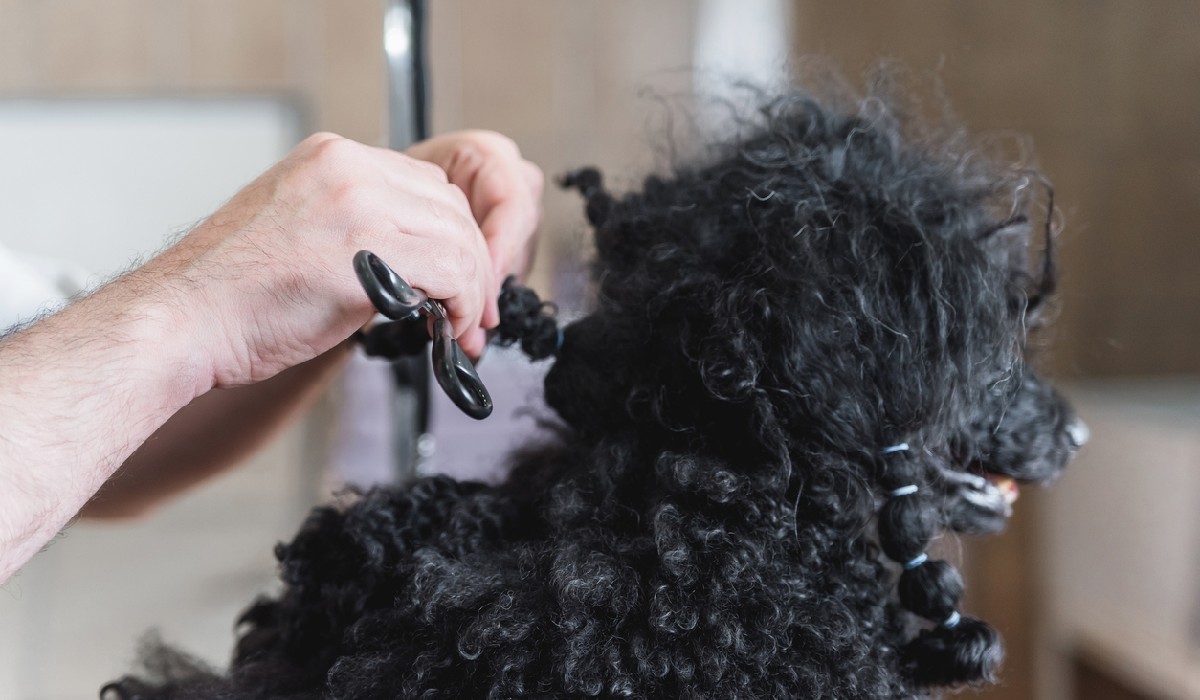How to Properly Care of Your Dog’s Hair

Having a furry friend in your home can be one of life’s greatest joys. But as any pet owner knows, taking care of a pet is no small task, especially when it comes to their hair. Even if you have the grooming basics down pat, you’ll need to know what the next steps are to maintain your pup’s fur in tip-top condition.
We’ve compiled a list of the tools and products you need to take care of your dog’s hair and make sure it’s looking its best. From shampoos and conditioners to brushes and combs, we have all the essentials covered. With the right products in hand, you’ll be ready to tackle any grooming challenges that come your way.
General Tips
Bathing
Giving your dog regular baths not only helps to keep them clean, but it also helps to keep their skin and coat in tip-top shape. When bathing, use a safe dog shampoo that won’t dry out their skin or fur. Depending on their breed, you may also need to use a specially formulated dog hair detangler to make sure all knots are removed during washing.
Brushing
Frequent brushing is necessary for different types of fur. It helps to distribute natural oils throughout the coat, removing dirt and debris in the process. Additionally, brushing removes shedding fur and prevents matting from forming. Brushes come in a variety of sizes and shapes, so make sure you find the one that best fits your pup’s coat type.
Diet
A healthy diet is essential for maintaining a healthy coat and skin. Be sure to choose a high-quality food for your dog with balanced nutrition and carbohydrates for energy. Since different breeds require different kinds of food, consult with your vet or research the type of food that would be best for your furry friend.
Coat Types
Short-haired Dogs
Breeds such as Beagles, Bulldogs, or Jack Russell Terriers have short hair which requires less maintenance than longer-haired dogs but still needs regular brushing or combing. Additionally, baths can be given every six to twelve weeks depending on the breed and lifestyle.
Medium-haired Dogs
Labradors, Golden Retrievers, or Greyhounds have medium hair which requires more frequent brushing than short-haired dogs to avoid tangles and mats from forming in the fur. Additionally, these dogs will need more intensive cleaning with consistent grooming during shedding season with recommended baths every four to six weeks depending on the breed and lifestyle.
Long-haired Dogs
Breeds such as Yorkshire Terriers, Maltese Poodles, or Shih Tzus have long coats which require even more frequent brushing compared to shorter-haired dogs. Since dirt often accumulates more quickly, brushing more often helps to avoid matting and tangles from forming in their fur. Additionally, baths should be given at least every three to four weeks depending on the breed and lifestyle to ensure that your pup’s skin is properly taken care of and protected from dirt build-up. Using a specially formulated dog hair detangler on certain parts of their fur, especially while they are damp after bathing will help with this.
Grooming Supplies
Brushes
Different brushes help with different types of coats ranging from pin brushes for short coats, slicker brushes for medium-length coats, bristle brushes for long coats, and molting combs for those who shed excessively throughout the year.
Combs
When dealing with stubborn mats or tangles that cannot be solved with a brush alone, a metal comb is usually necessary to help chip away at these spots gently without hurting your dog’s skin underneath.
Conclusion
Taking care of your pup’s hair doesn’t have to be a daunting task. With the right knowledge and tools, you’ll have your pet well on their way to having a beautiful and healthy coat. From shampooing and conditioning to brushing and trimming, the essentials of pet grooming can be simple and easy to learn. So don’t be intimidated, take the time to read up on grooming basics and find out what supplies are needed to keep your pup looking their best!
